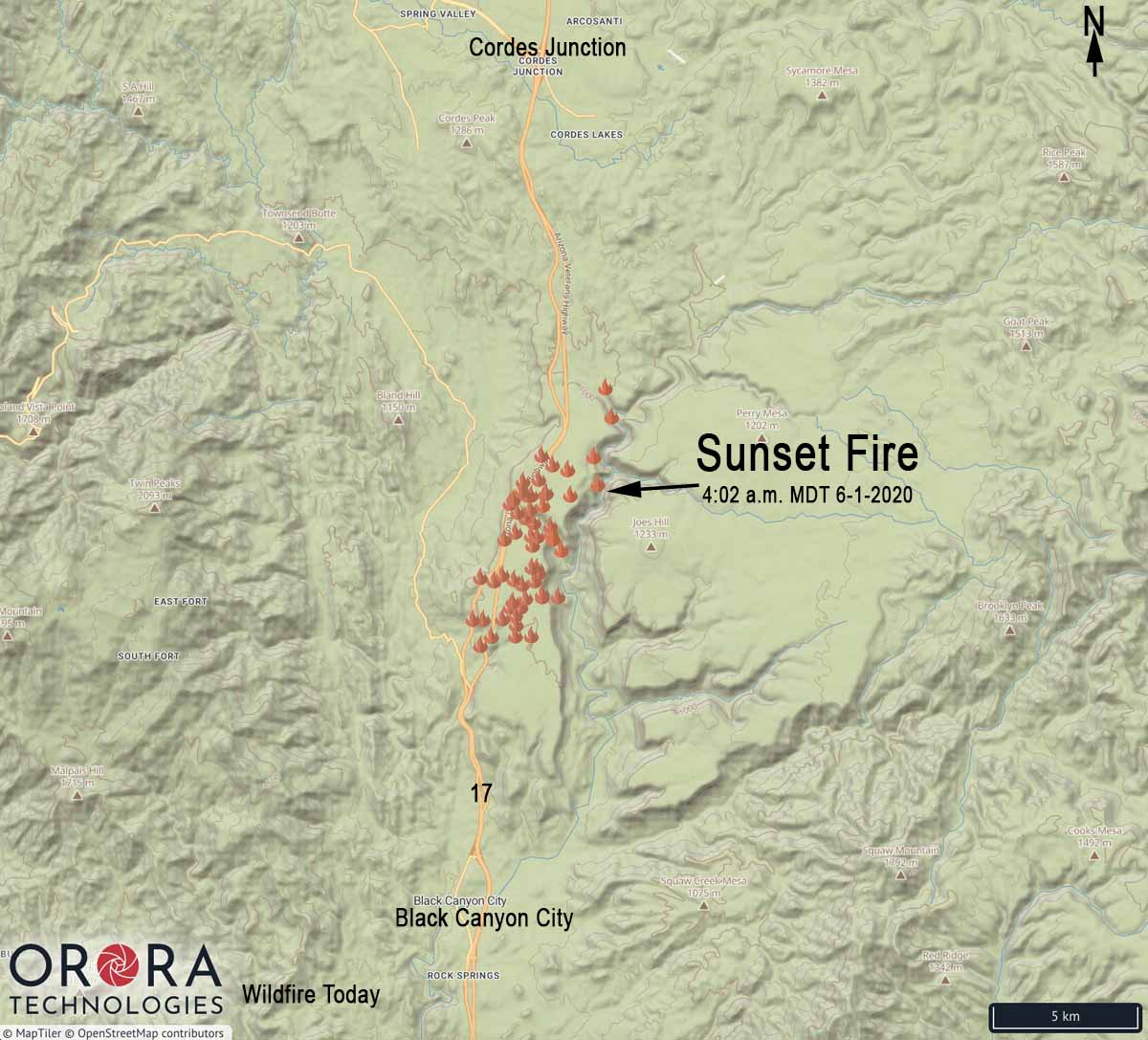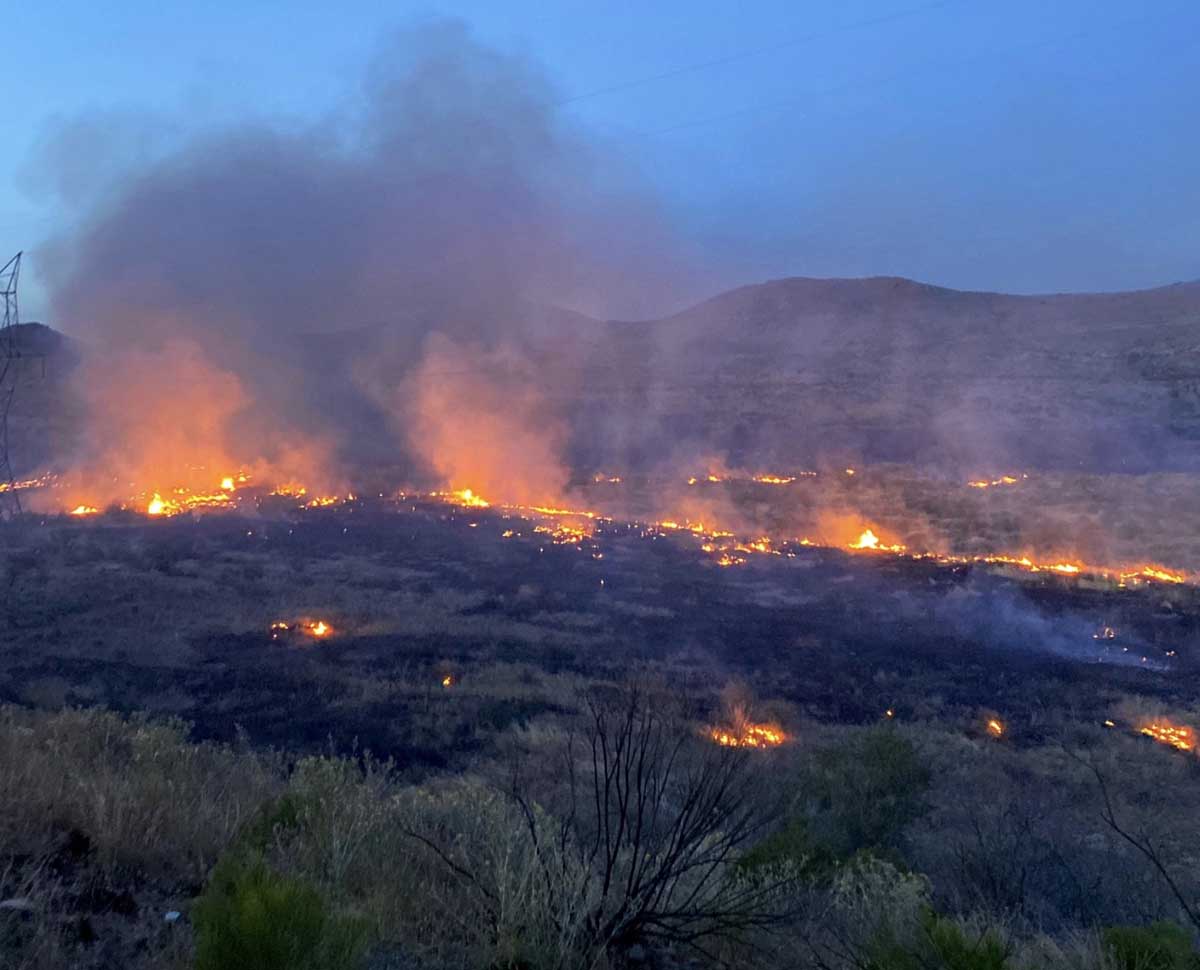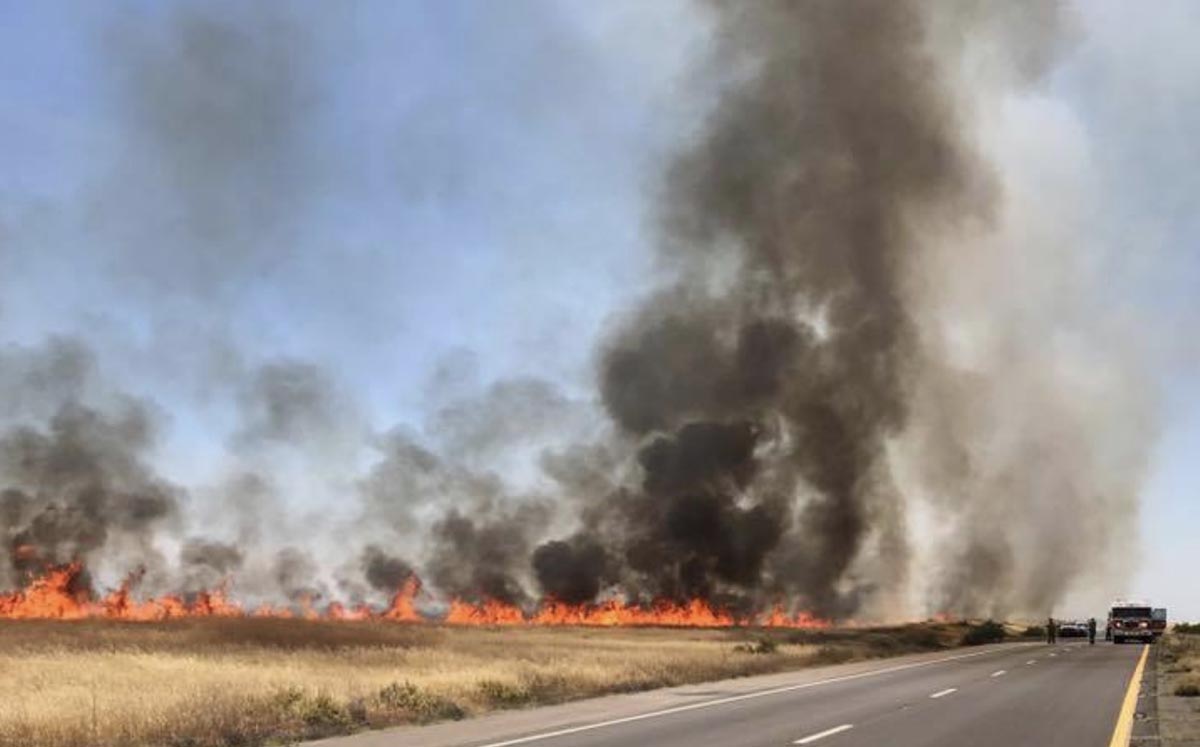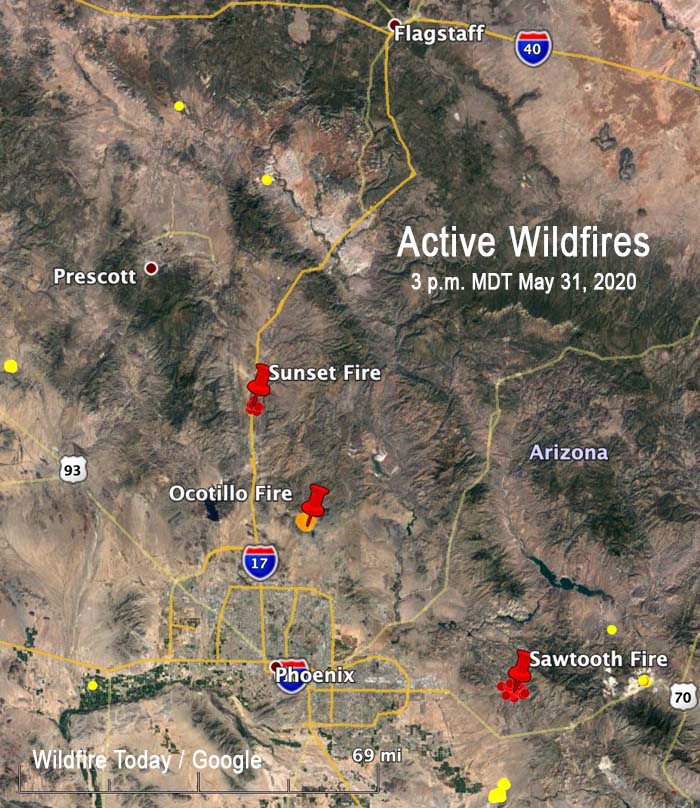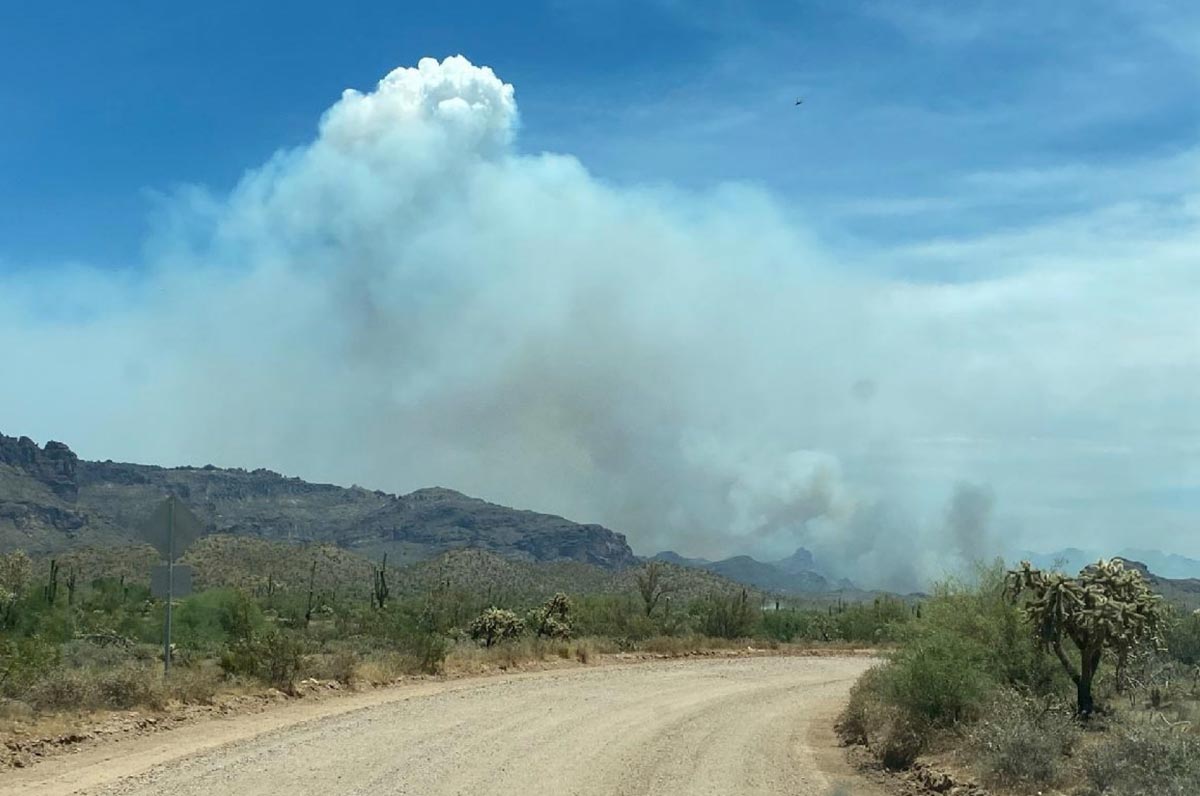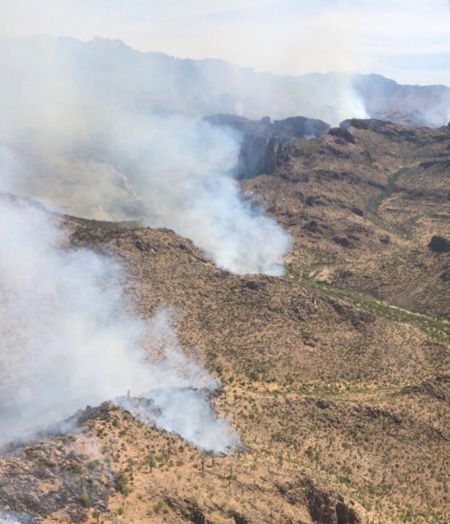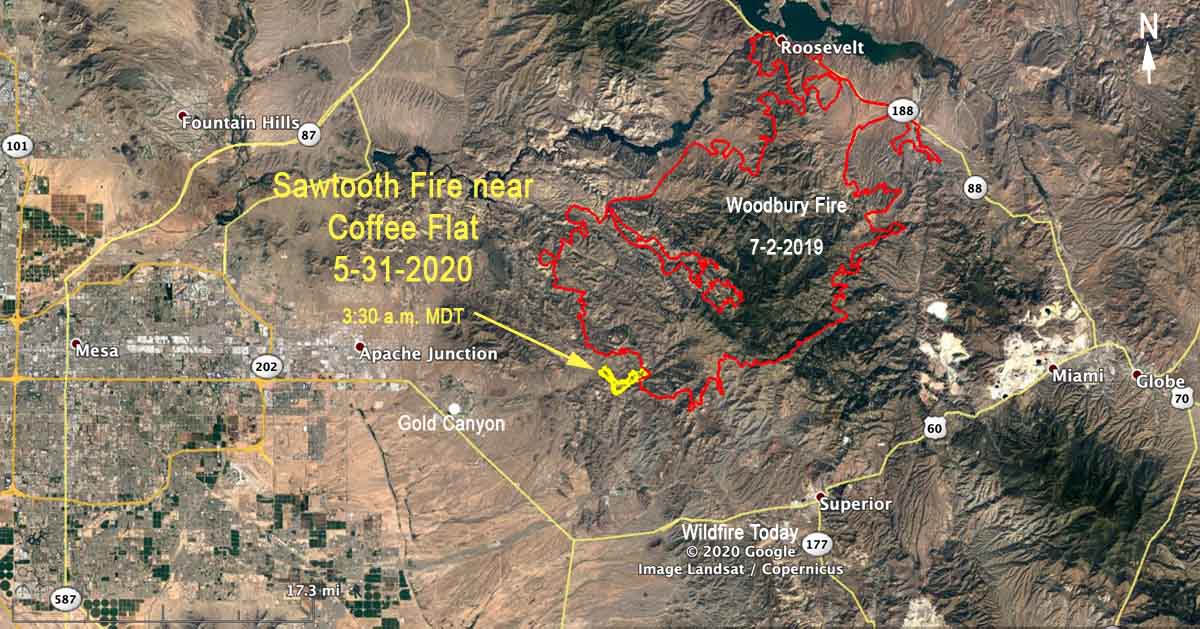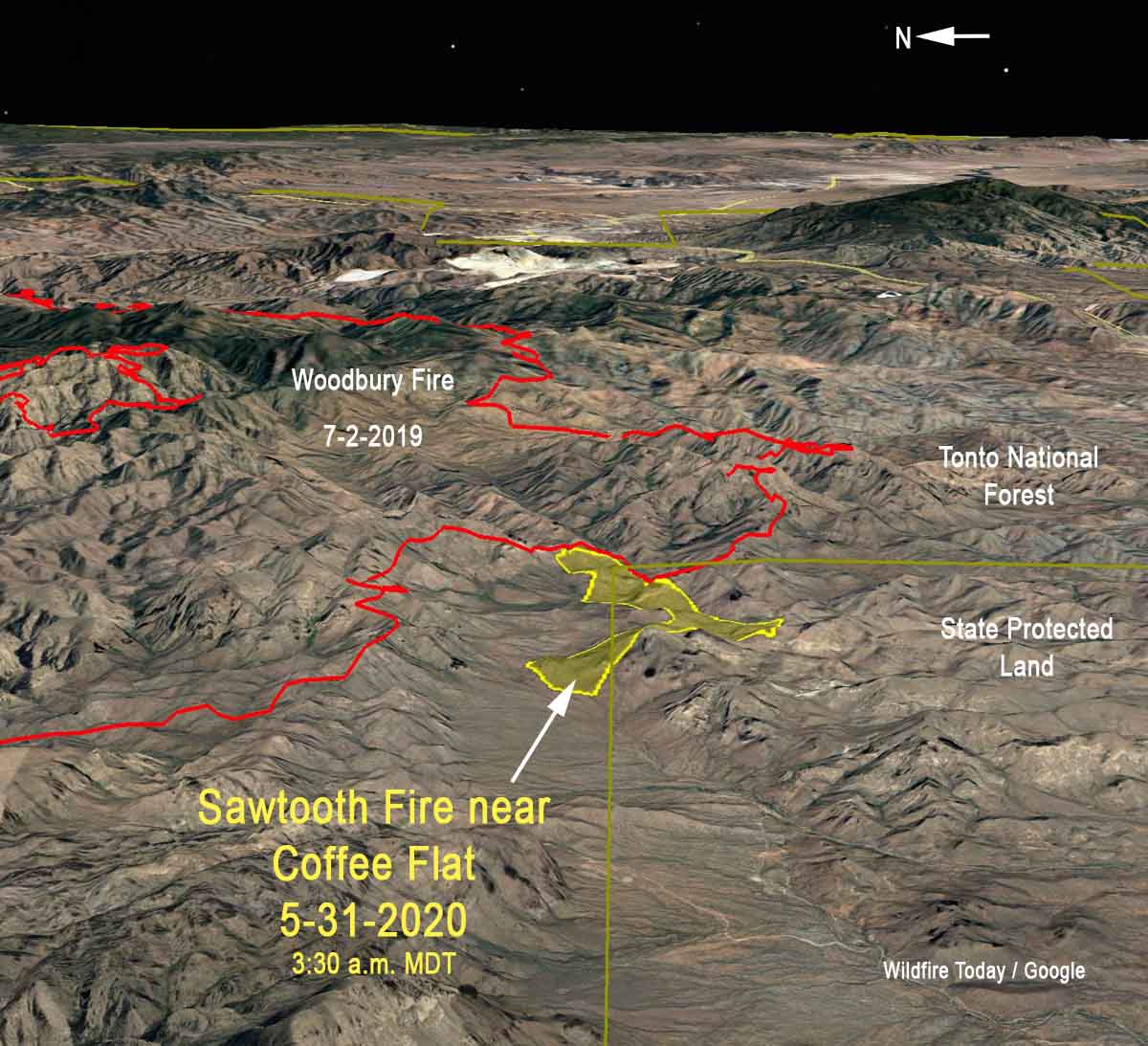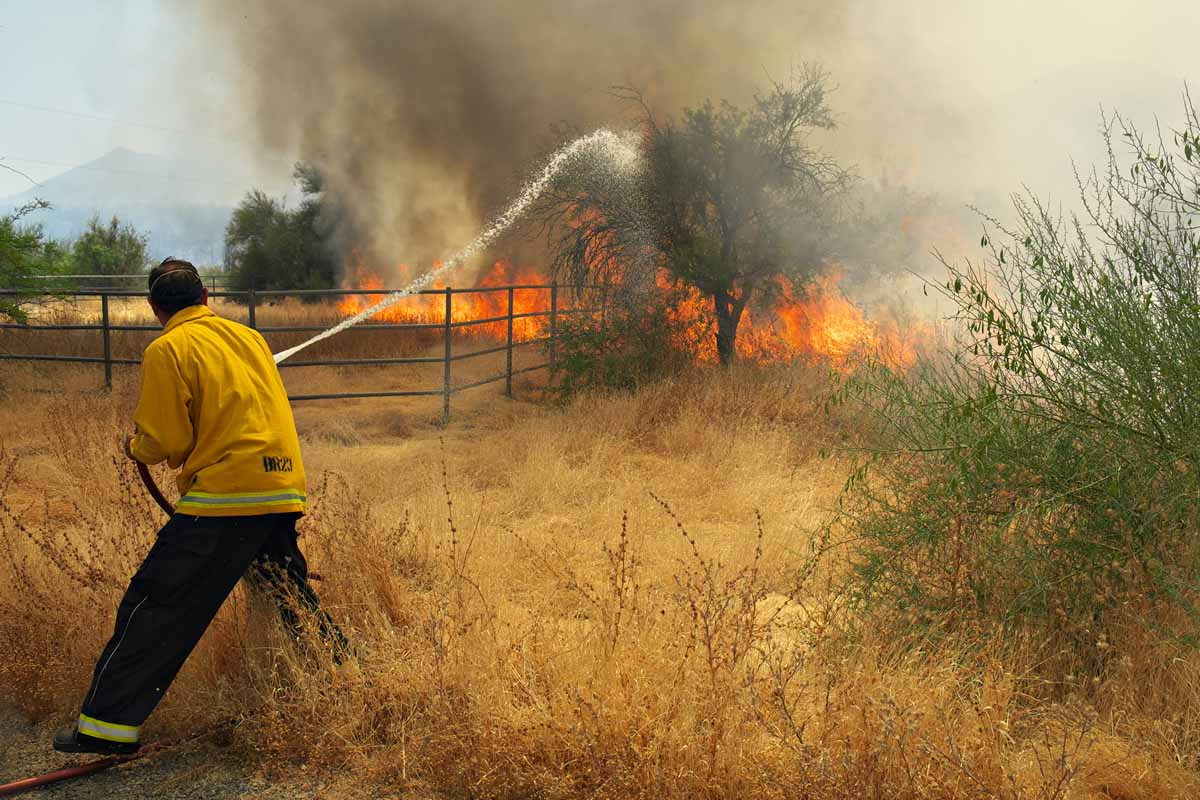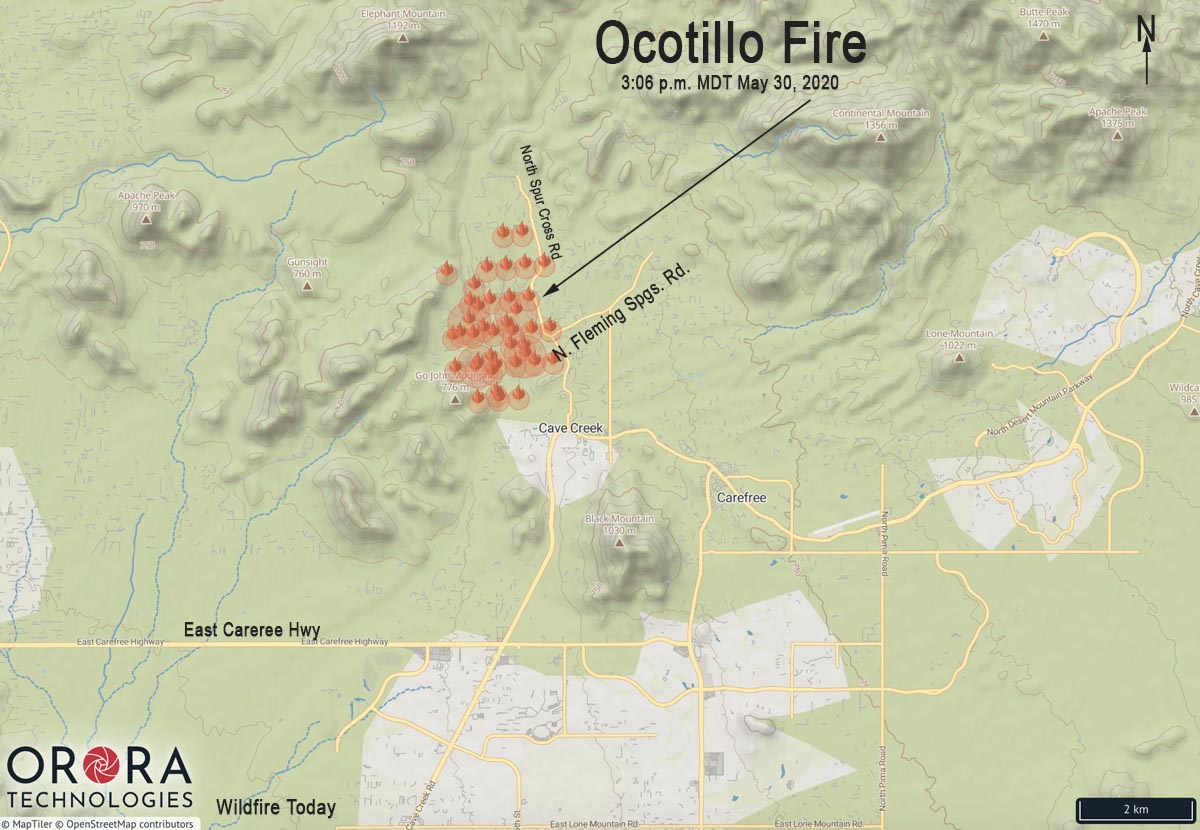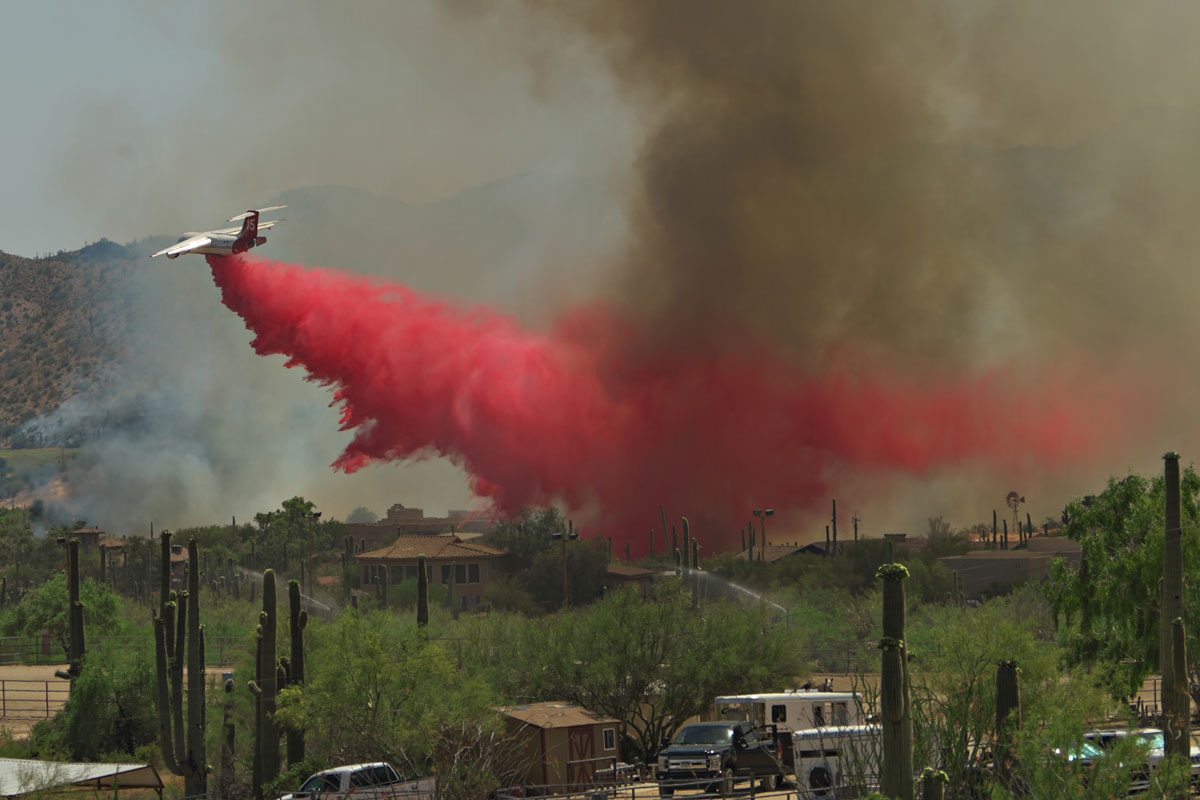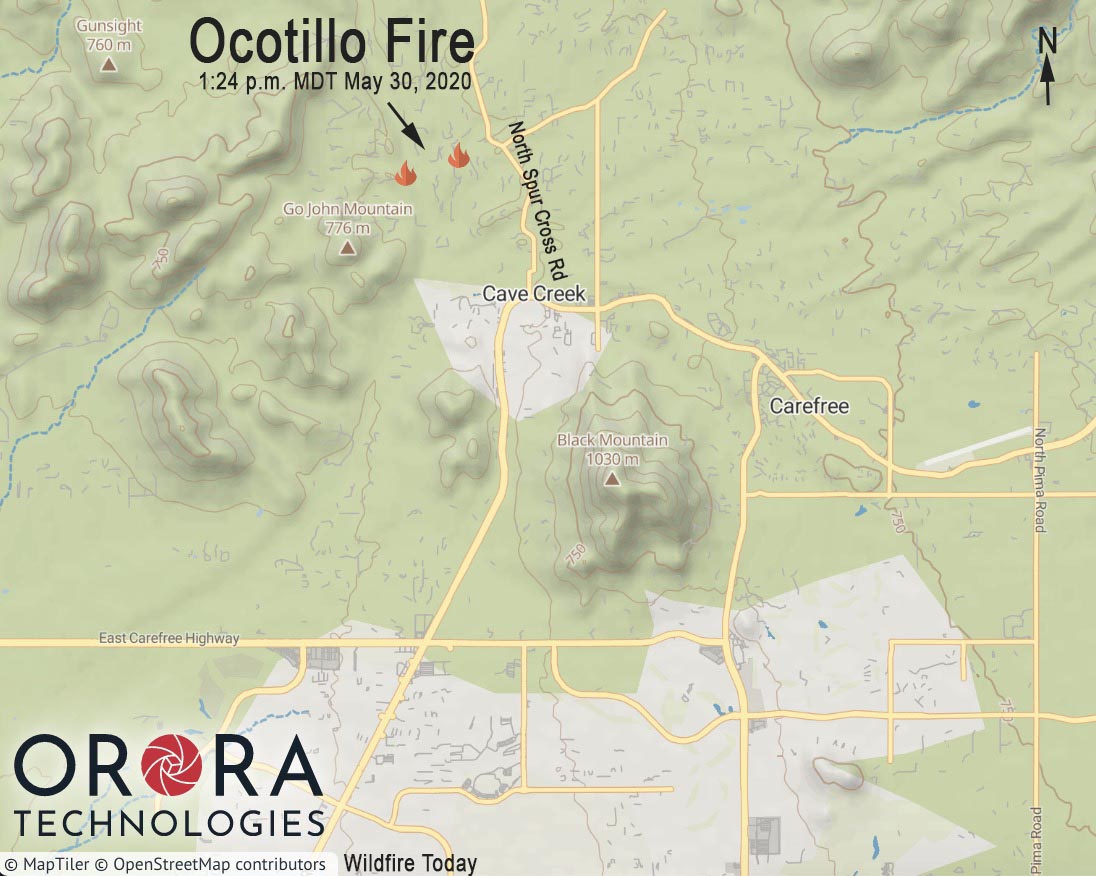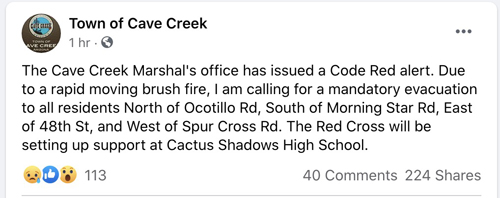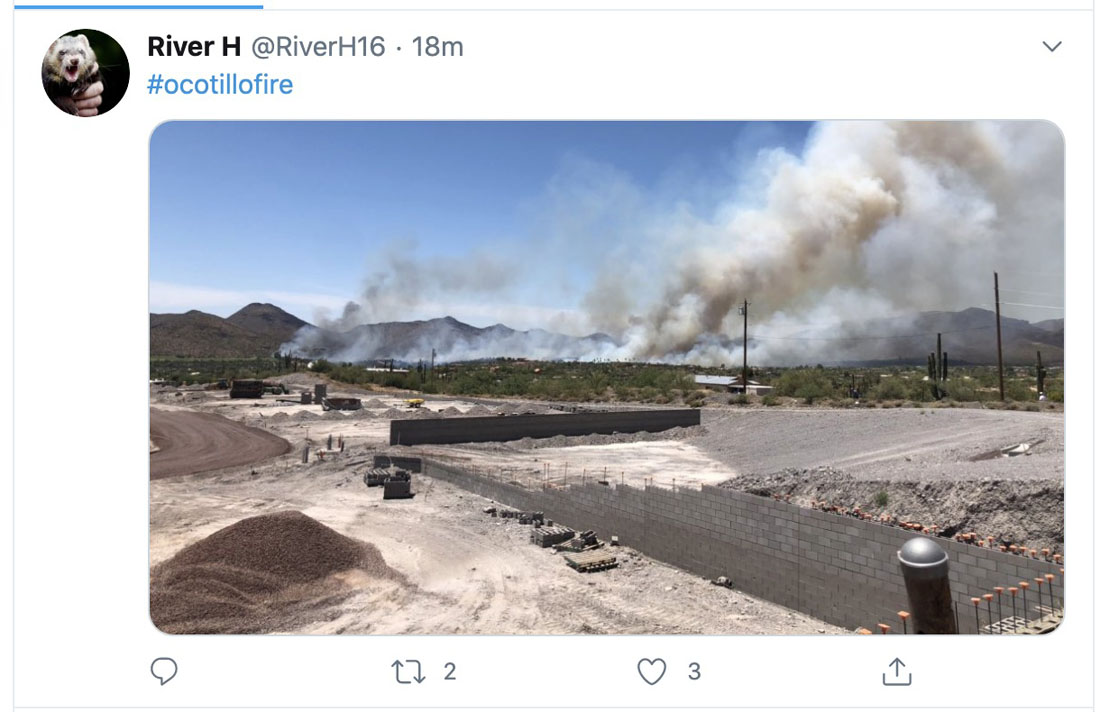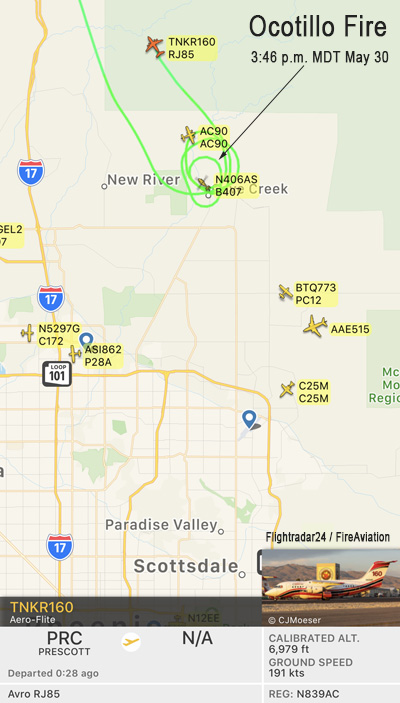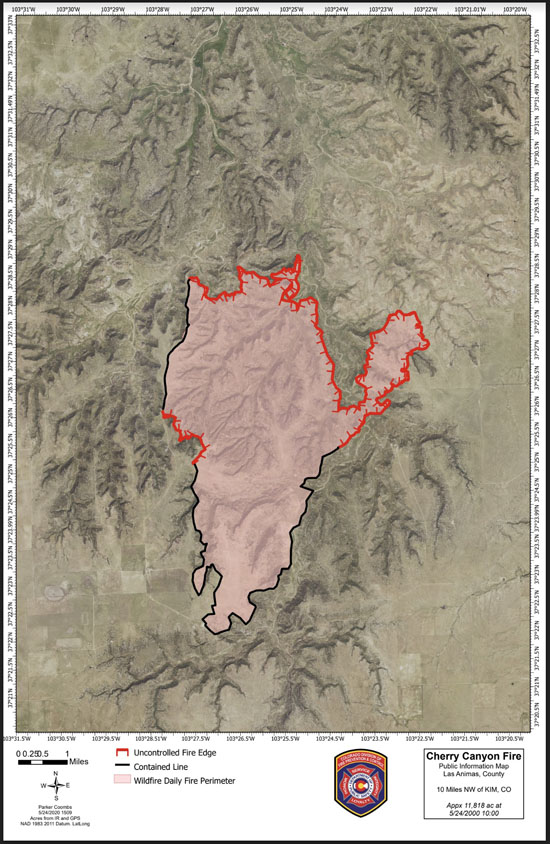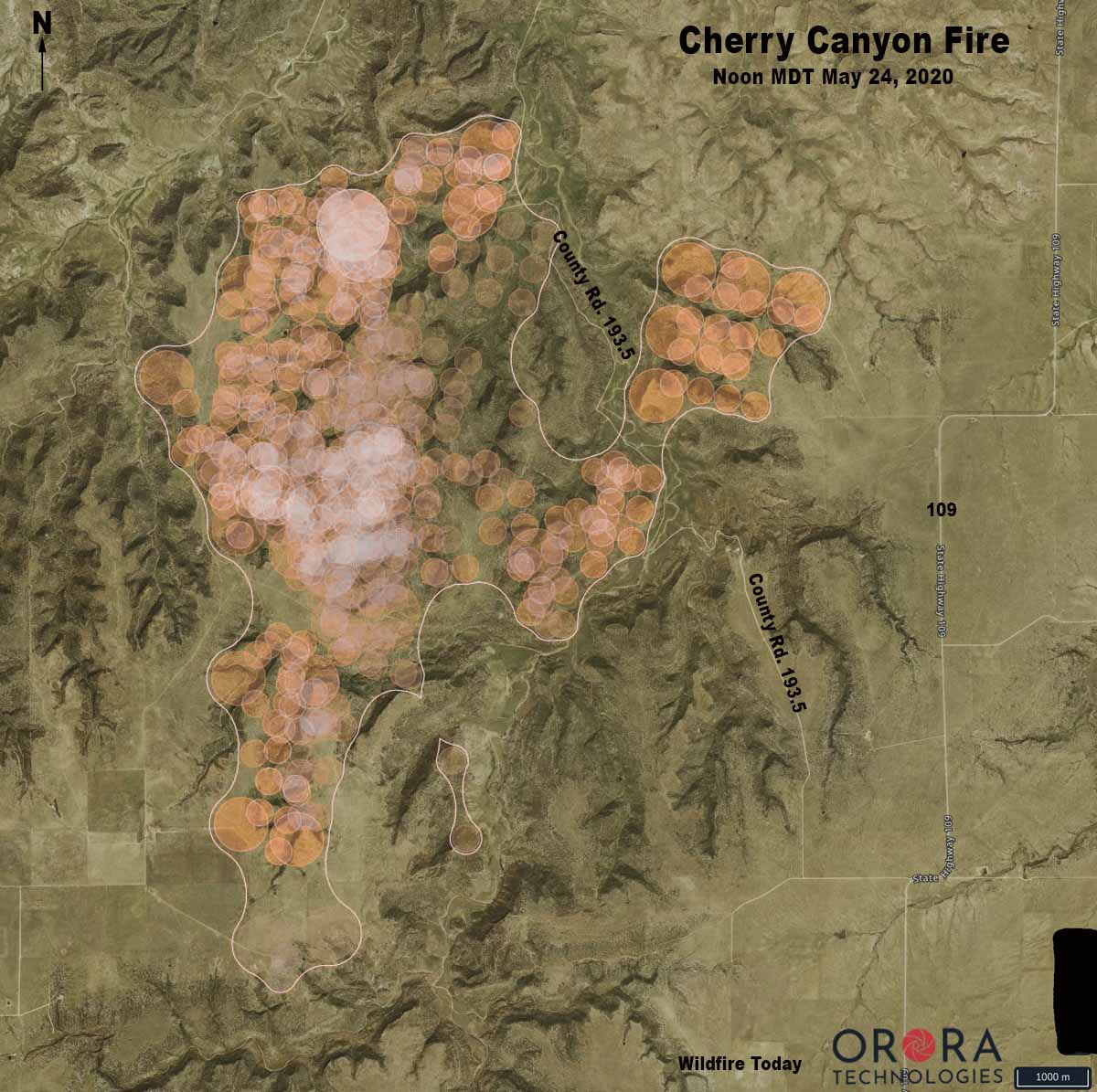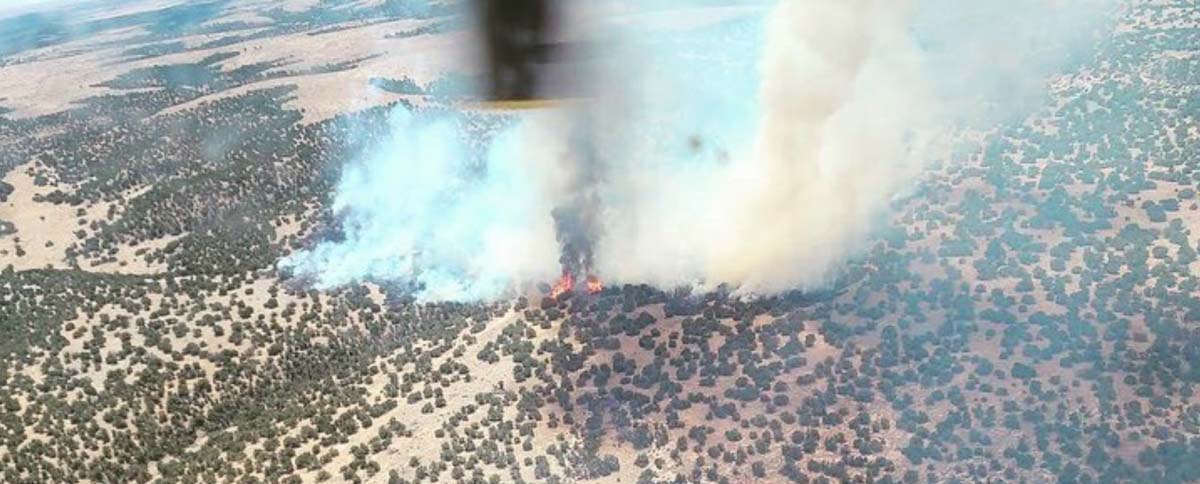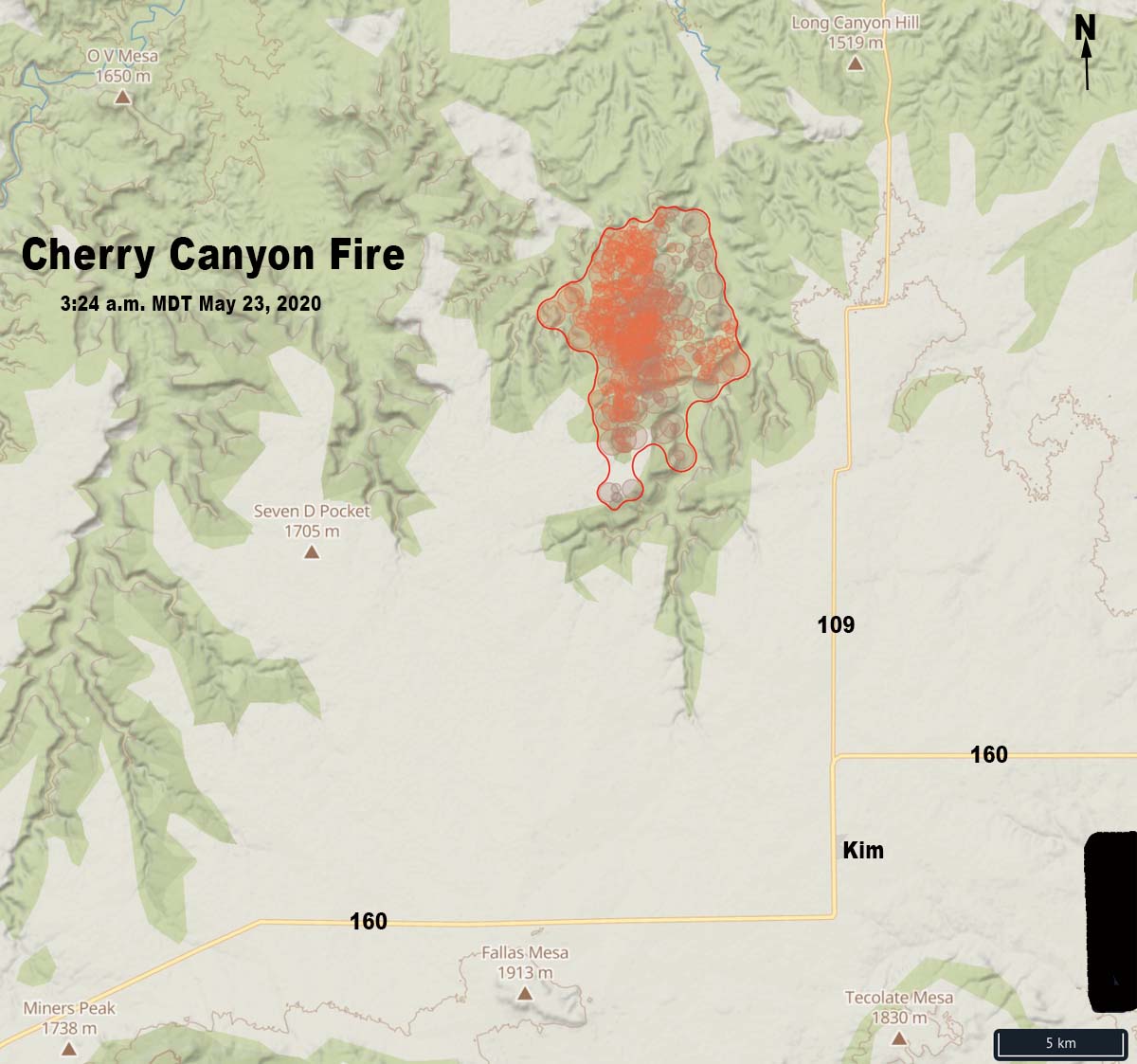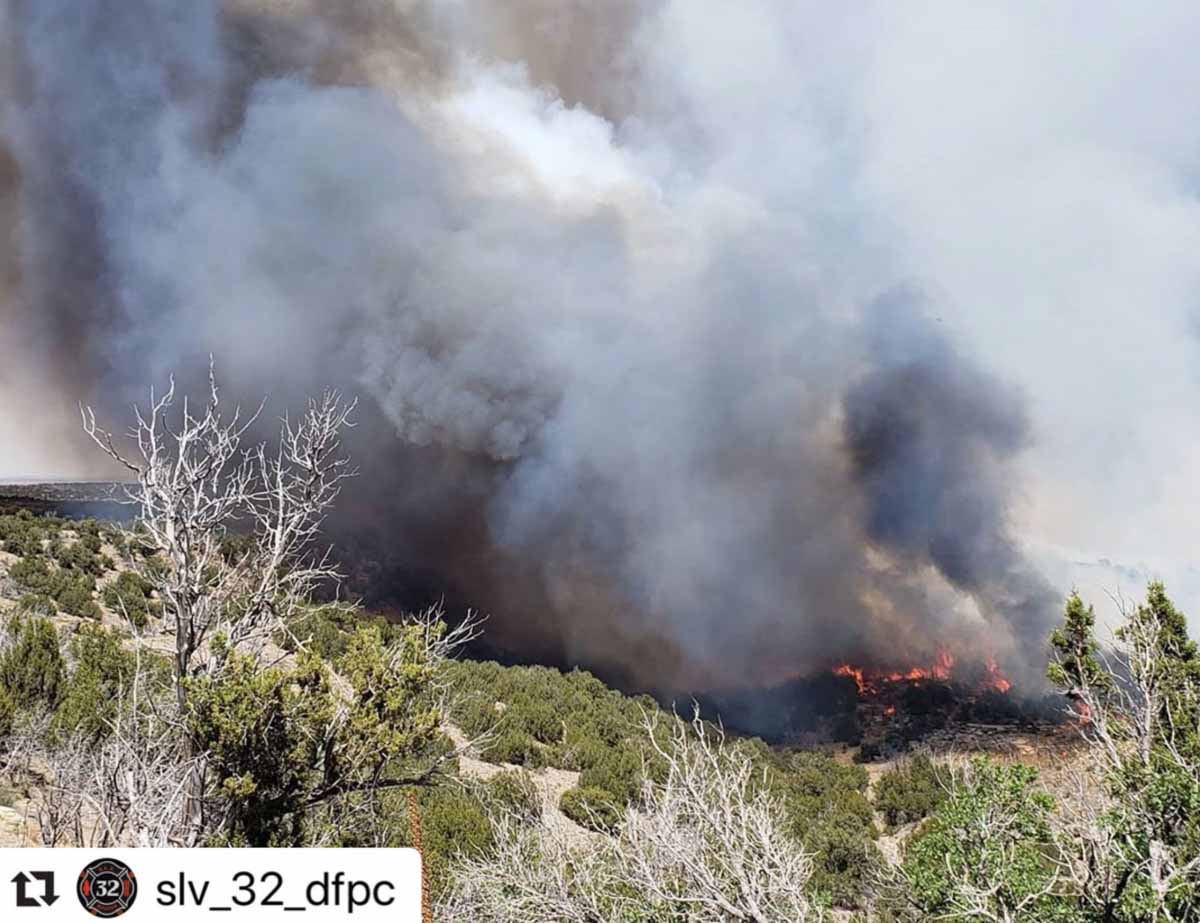(UPDATED at 8:02 a.m. MDT June 2, 2020)
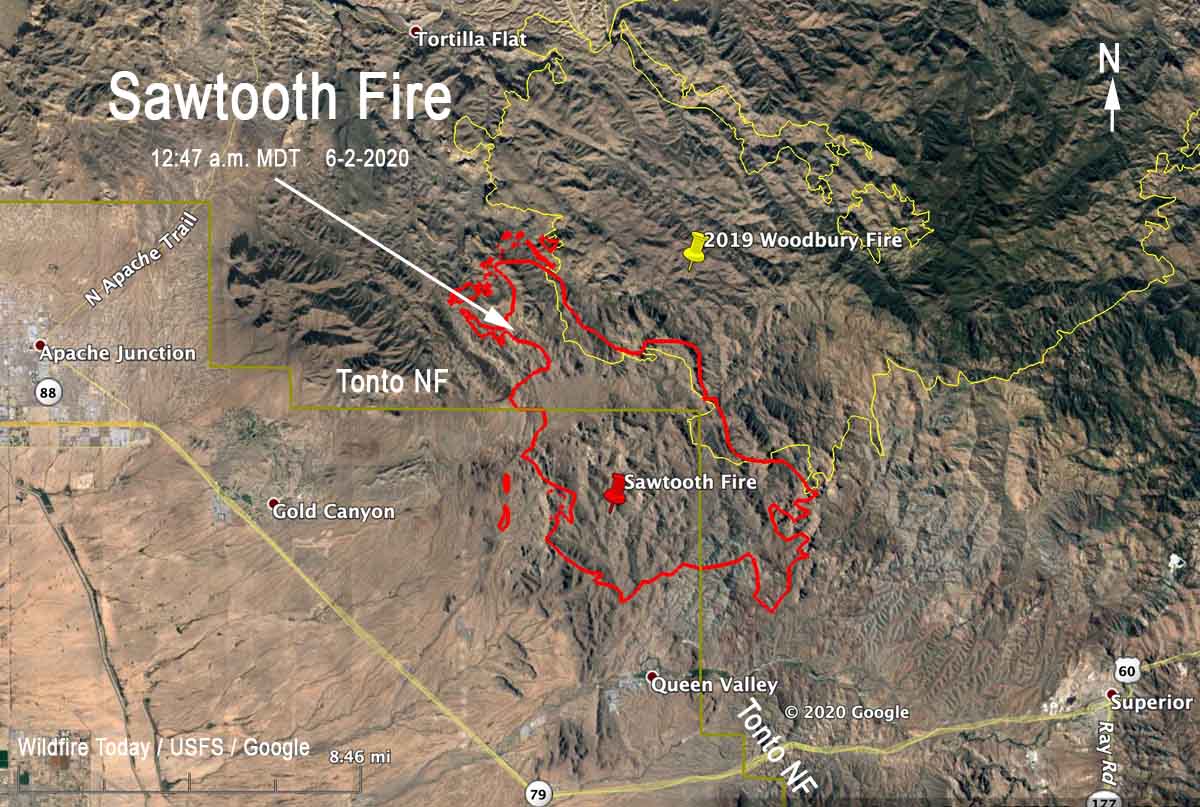
The Sawtooth Fire east of Phoenix 10 miles east of Apache Junction was not as active Monday as it was on Sunday. A fixed wing mapping flight at 12:47 a.m. MDT Tuesday determined that most of the growth was on the north side. When the incident management team releases an update Tuesday morning they are expected to say it has burned over 20,000 acres.
(To see all articles about the Sawtooth Fire on Wildfire Today, including the most recent, click here)
While firefighters faced 104 degrees Monday with 12 percent relative humidity, the wind was slight, about 2 to 5 mph which accounts for the less than massive spread Monday. The forecast for Tuesday calls for stronger winds out of the west at 5 to 10 mph, 13 to 18 percent RH, and a high temperature of 100 to 104. This could result in more fire activity than Monday on the south side of the fire north of Queen Valley and northwest of Superior.
At 12:47 a.m. Monday the Sawtooth Fire was approximately 2 miles north of Queen Valley and 8 miles northwest of Superior.
(UPDATED at 6:08 p.m. MDT June 1, 2020)
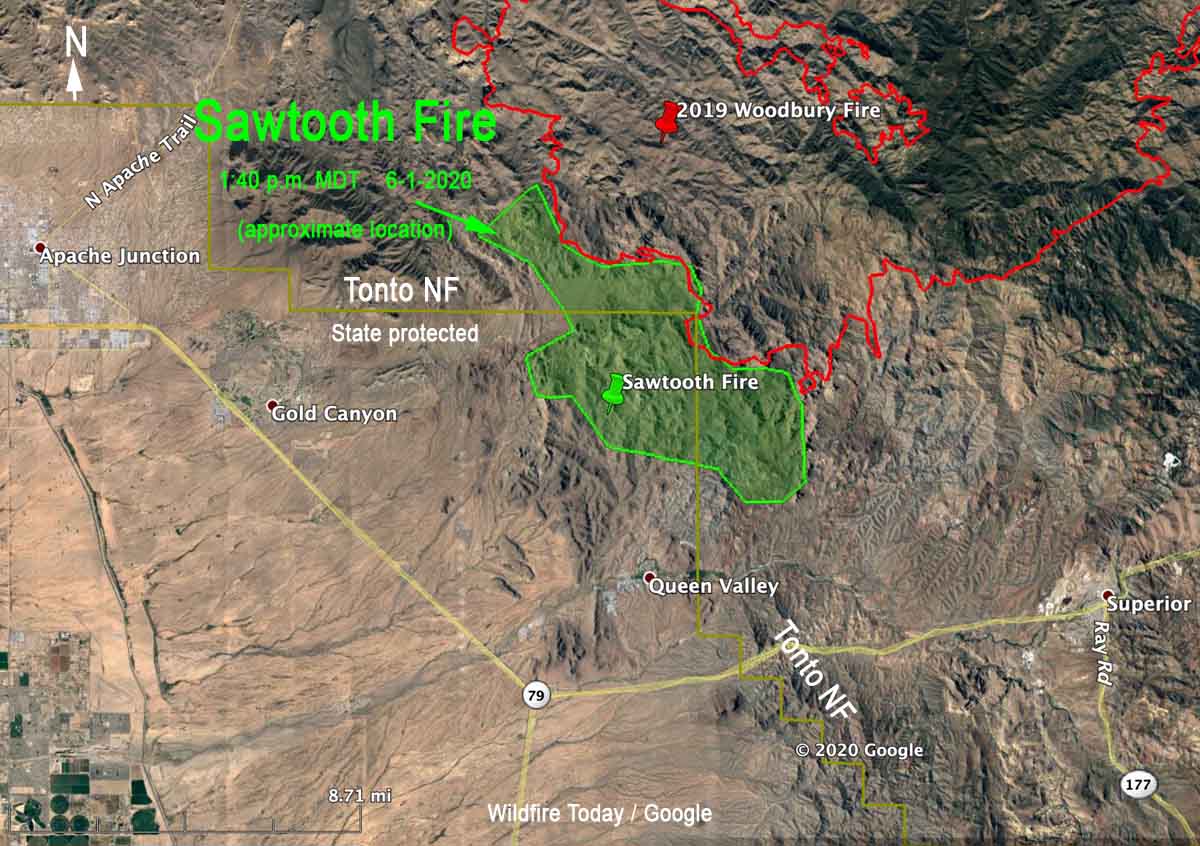
The incident management team on the Sawtooth Fire updated the size at 6:50 p.m. today, saying it has burned 16,000 acres. A Type 1 incident management team has been ordered — Sinclair’s team from the Southwest Geographic Area.
The updated map above shows the APPROXIMATE location of the Sawtooth Fire using satellite heat sensing data as of 1:40 p.m. Monday. The map includes the boundary of the Tonto National Forest (in yellow).
Most of the recent spread was on the northwest and south sides. It has grown about a mile closer to Queen Valley, and Monday at 2:30 p.m. was about two miles north of the community.
Very little official information is being released about this major wildfire.
(UPDATED at 8:20 a.m. MDT June 1, 2020)
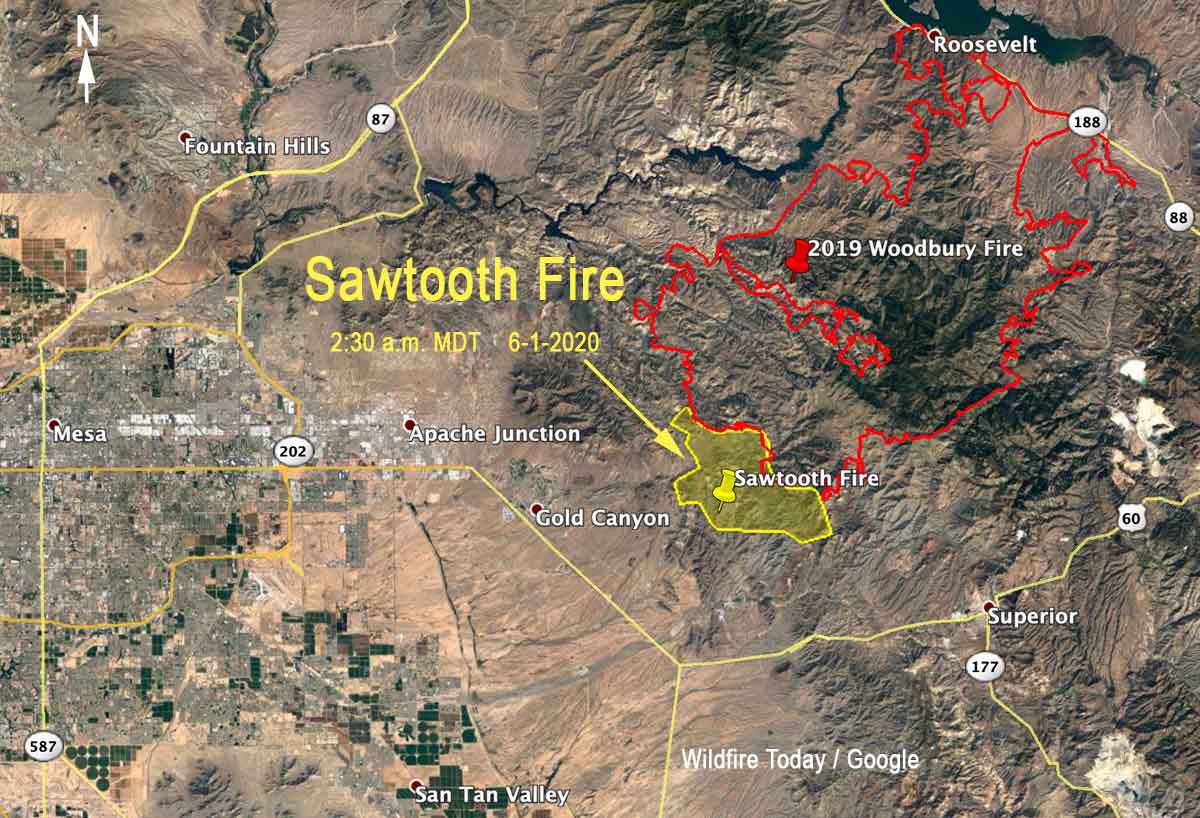
The Sawtooth Fire east of Phoenix, Arizona was very active Sunday and Sunday night, spreading in all directions. It made a big push during the night growing three miles to the east and southeast.
(To see all articles about the Sawtooth Fire on Wildfire Today, including the most recent, click here)
During a satellite overflight at 2:30 a.m. MDT Monday the fire was six miles east of Gold Canyon, three miles north of Queen Valley, and seven miles northwest of Superior.
The lightning-caused fire was reported Saturday at 10 p.m. It has burned into the footprint of the Woodbury Fire that blackened over 123,000 acres in June, 2019. Sunday night the Forest Service reported that the Sawtooth Fire was 3,500 acres. According to heat detected by satellites at 2:30 a.m. Monday it was approximately 11,000 acres. There has been limited spread into the Woodbury Fire scar.
The Sawtooth Fire is on land protected by the state and is also within the Superstition Wilderness area of the Tonto National Forest.
Weather
The low relative humidity Sunday at Gold Canyon was 10 percent and the high temperature was 112, falling to 78 by 5 a.m. Monday. The wind Sunday was not extreme, blowing at 3 to 8 mph with occasional gusts to 15, and less than that during the night. The direction was generally from the southwest, but switched to come out of the west-northwest after 10 p.m. and later the northeast, which accounts for the spread of the fire to the south detected by the satellite at 2:30 a.m.
The weather forecast for the fire area on Monday predicts a high of 99 to 103 degrees, a minimum humidity of 12 to 17 percent, and 5 to 8 mph upslope winds in the afternoon with isolated gusts to 12. There’s no chance of rain.

